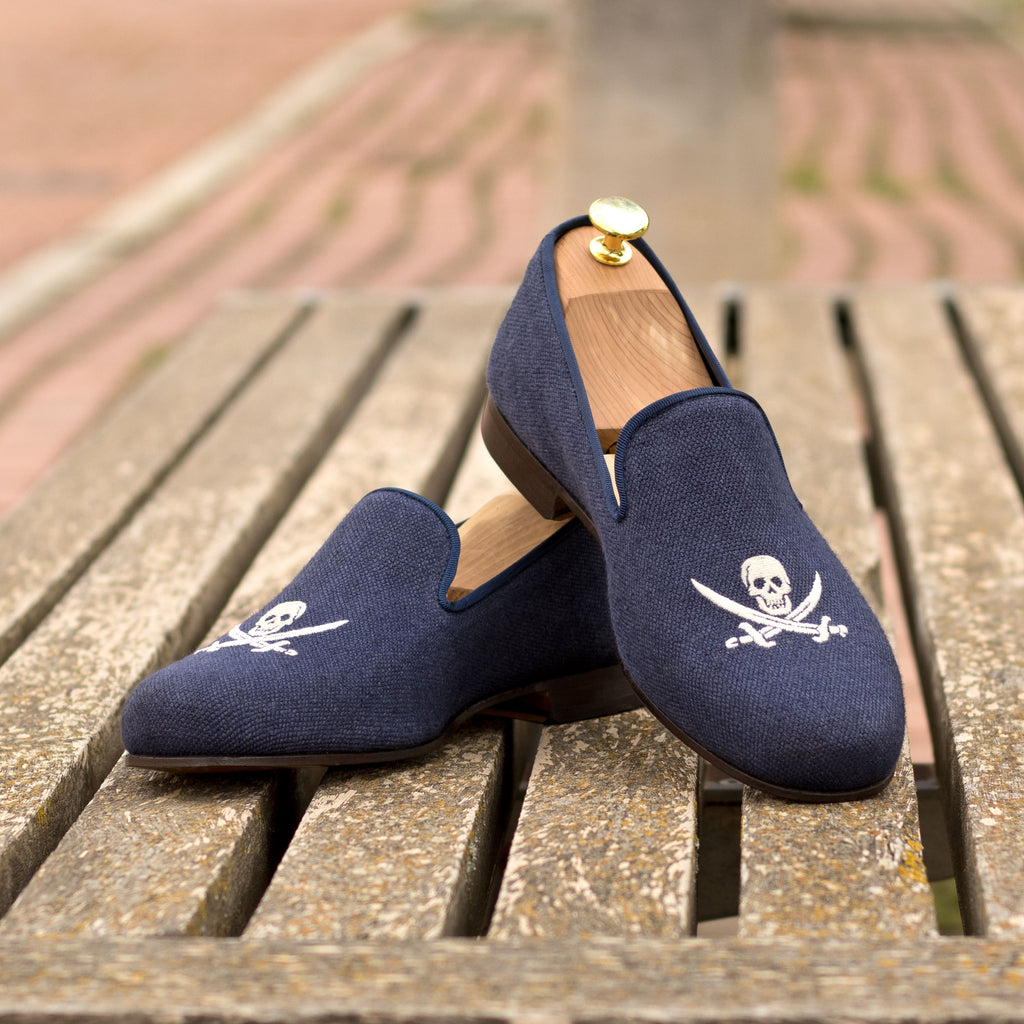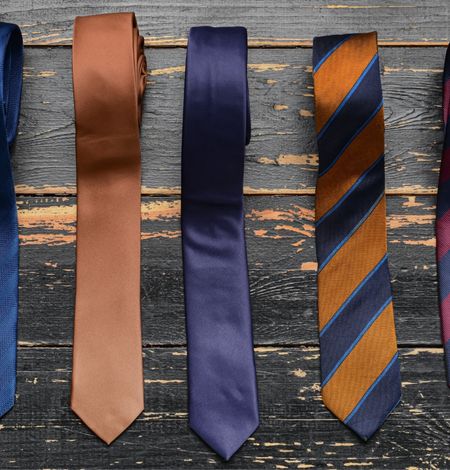Guide to Tuxedos & Black Tie Etiquette

From Billy Porter's tuxedo gown to Timothée Chalamet's velvet embellished crop jacket worn without a shirt at this year's Oscars, many things pass for formalwear in the entertainment world. However, when you receive an invitation to an event that requires formal dress, your options are much less extravagant.
The rules of traditional Black Tie dress are particular. They are based on the legacy of British aristocracy and have slowly relaxed over time. You may find that hard to believe once you learn what they are, but be thankful that we are no longer bound by the stringent rules that governed white tie formal (still used for state dinners), which included a tailcoat, among other things. They were not only elaborate and expensive but uncomfortable.
Dress Requests Seen on Invitations
Black Tie events should only take place in the evenings after 6:00 pm. It's important to remember that whether it's a wedding or religious celebration, the evening isn't about you but your hosts. Dressing outrageously may overshadow the main event. If you aren't familiar with wearing a tuxedo, never fear; we'll go through the various elements below.
Black Tie Only/Required means that your hosts expect you to show up following all the conventions of black tie. Unfortunately, that means that if you don't own a tuxedo, you are expected to purchase or rent one for the occasion. The hosts may want to emphasize the formality and importance of the event if it's a banquet or may wish for their (wedding) pictures to look a certain way. This is the most autocratic dress code.
Black Tie Requested means that you are strongly requested to wear black tuxedos, but they understand that not everyone can afford one. It would help if you still tried to stick as closely as possible to black-tie formalities.
Black Tie Optional/Preferred allows you to wear a dark business suit (black, charcoal gray, deep navy) if you don't own or don't want to rent a tux. If you're wearing a suit, pair it with a white dress shirt. Either regular (barrel) cuffs or French cuffs are acceptable. Still, keep colorful items to a minimum and stick with a solid dark red, burgundy, navy, or black tie. If you must, a light blue shirt would be acceptable but not preferable. Avoid light-colored suits, sport coat/trouser combinations, and too-colorful accessories.
If you're wearing a tux, the rules are slightly relaxed. Your shirt could have a covered placket instead of studs, barrel cuffs, and a turndown collar. If you wear a colored vest, tie, or cummerbund, choose one, not two, or more, for the pop of color. Wearing a matching set is more appropriate for a prom than a wedding or adult event.
Creative Black Tie is still a black tie, so you should wear your tuxedo, but a bit of color, such as a burgundy, plum, gold, or bottle green cummerbund or vest, is acceptable. Don't try to make every accessory (tie, cummerbund, socks, vest, suspenders/braces) a different color. Perhaps you'll wear a long black tie instead of a bow tie. Still, stick to primarily black and traditional. Entertainment awards shows started as creative black tie decades ago, and the concept keeps getting pushed further. Unless you are in that field, stick to more traditional tuxes.
Smoking Jackets or dinner are velvet jackets that mimic the overall pattern of tuxedo jackets: they have the same button stance and collar facings of grosgrain or satin and are worn with your tuxedo pants, but they are made of richly colored velvet (burgundy, plum, gold, bottle green). These can be paired with velvet slippers that may be monogrammed with the wearer's initials or family crest. British guests donned smoking jackets after dinner to wear as they were smoking cigars and drinking port so their clothing wouldn't stink when they rejoined the women.
Elements of Traditional Black Tie/Tuxedos

Tuxedos should be black or midnight blue wool only! The only exception is a white/off-white/cream jacket if it's summer or you live in a year-round warm climate. When reading the rules below, remember that a tuxedo's purpose is to present a streamlined appearance – the overall look is minimalist. Think of this as an advantage. If you purchase a classic tuxedo, since the style rarely changes to cater to fads and trends, this is a garment that you should be able to use for many years. If you want some great examples of tuxes, there's one worn correctly in every James Bond film.
The jacket lapels should be peak or shawl styles, not notched, and made from either satin or grosgrain (a ribbed fabric you might recognize from ribbon). The same fabric should also be found as facing or trim around pockets (slash only, not flap), the fabric-covered buttons, and the outseams or stripes down the pant legs.
The jacket can be unvented or have side vents, not a center vent. The purpose is to present a smoother look. The advantage to side vents is that they are more comfortable to sit in, you can reach into your back pockets, and won't wrinkle as much when you sit. It isn't as smooth a standing line, but this is one of the acceptable concessions to comfort and functionality that has evolved.
Tuxes are either single-breasted with 1 button or double-breasted in a 2x6 configuration. The bottom button won't be buttoned, and a good suit jacket will curve slightly out from the middle button to fit over the hips better.
Pants are generally not pleated but plain front and are seated at the waist – don't expect them to be low rise. The traditional plain front rule has relaxed, and it's okay to have pleated pants now. However, it would help if you didn't look for pants that are too narrow on the bottom. The pant legs should come about 2/3 of the way to your shoe toes. This creates a good-looking, elongated line. Except for those evil, powder blue polyester tuxes in the 70s, a classic tux won't have super-skinny or bell bottoms.
Now comes the tricky vest-cummerbund-suspender/braces issue. If you are thinking of a color other than black, remember the traditional colors of deep gold, burgundy, plum, or bottle green. You also want to remember that you don't want everything to be matchy-matchy color.
Cummerbunds are sash-like garments that fit around the waist. Traditionally, they should be black or white in the same grosgrain or satin of your tux, with pleats facing up. An easy way to remember this is that gentlemen would put receipts or ticket stubs in their cummerbund. Their historical beginning was with British military troops in India, where it was too hot to wear a vest, so they adopted the cummerbund. The word comes from the Persian kamarband, meaning loin-band.
Your tux pants will probably have adjustable tabs at the sides of the waistband, but you can add suspenders in black or white that can be worn with either a cummerbund or vest if you want or need them.
Vests are traditionally either black or white, entire fabric or backless. Full fabric vests may have a silk or lining fabric as the back panel. Backless has a strap that connects the neck area to the bottom. Both come with or without lapels. If you are wearing a shawl collar tux, skip the lapels. A peak-collared jacket is more compatible with lapels – but they aren't necessary. You can wear a backless vest if you plan to keep your jacket on through the event. Wear a vest with a back if you think you'll get hot from the weather or dancing, and remove your coat.
Finally, you're ready to pick out a tuxed shirt. Again, these are traditionally fairly streamlined and timeless. Of course, it's white. Cotton, rather than linen or silk, is probably your best choice. It wrinkles less and is still breathable. There are several different weave types: twill, pique, poplin, etc.
There are two traditional two-collar styles: wing or fold-over. The bow tie should be worn on the outside of both. You are supposed to tie the tie yourself rather than having a clip-on. If you are using a pre-tied tie, make sure that you wear a fold-over spread collar so no one can tell you cheated and didn't tie it yourself. Collarless shirts are acceptable for Creative Black Tie occasions.
Your shirt may have a bib front, the same pleated fabric, a textured white fabric panel, or a placket covering the buttons. The top hole is visible for use with a stud. Studs can be silver, gold, black onyx, or mother of pearl. Similarly, it would help if you had French cuffs with matching cufflinks or knotted silk closures.
We're finally down to your feet! I'll bet you never thought there was so much detail that went into wearing a tux!
There are several styles of shoes you can wear. No, sneakers and boots aren't included in that choice. Of course, you already know I'm going to say that traditionally, they're black unless you're wearing a smoking jacket, and then they can be matching velvet. Shoes are either nicely polished calfskin, patent leather, or velvet. You can wear cap-toe oxfords, Venetian loafers, or slippers (not the house kind). There are also opera pumps, which look like ballet slippers with a grosgrain bow. I think those are extinct in the US.
Traditionally paired with black silk socks, fine cotton or wool socks will do. Mostly, you don't want anything bulky. Tradition dictates that the socks are over the calf so you don't flash skin when you sit down.
All these rules really boil down to presenting a consistent and sleek look. Having gone through all these exacting standards, I've got to tell you that almost anything is acceptable today unless you are trying to conform to an invitation that says Black Tie.
Wedding Parties
If you are creating a look for a wedding party, the groom's outfit may differ slightly from the rest of the party, but they should be complementary. This is true whether they wear tuxes, suits, or other wedding attire (beach or backyard weddings call for a different dress).
If tuxes are being worn, while the suits may all be the same, the groom might choose to add a vest. If you bring in some of the wedding colors, choose the tie, cummerbund, pocket square, or vest for the color. The groom and groomsmen could have the color on different accessories (tie vs cummerbund). The objective is to ensure the groom stands out yet is still cohesive. Groomsmen's colors should be less noticeable, and patterned items should have a more subdued pattern.
Buying vs. Renting

Whether you buy or rent a tux, you should have your garment ready about a month before the big event. Try to maintain an even weight because fluctuations of more than 10 pounds may mean you need a different size. Under 10 pounds of gain or loss will mean that alterations are possible.
If you are planning a wedding, and your party is not all located near you, never fear; you can still get matching tuxes whether you purchase or rent them. Several companies take you through the entire process online. Indochino offers made-to-measure and custom tuxes. You can use companies such as The Black Tux or Men's Warehouse to rent.
If you want help deciding whether to rent or purchase your tux, this YouTube video from Gentleman's Gazette might help https://youtu.be/ZQetONz7bcI.
Remember that most rental shops only make sleeve and pant length alterations if you are renting. They can't make drastic alterations, so if you or your wedding party don't fit into the normal range of sizing (short, tall, very thin, or heavy), you may encounter significant problems.
Tuxedo rentals usually range from $100-$200 and must be returned within a day or two. To rent costs about ½ - ⅓ the price of purchasing a new basic tux. If you think you'll have more than one occasion where you'll need or want to wear a tux, purchasing one is the most economical choice. It's undoubtedly the best choice regarding convenience, fit, style, and aesthetics. Rentals have gone through many, many wearing's and cleanings. Some look worse for wear, and the fit will never be perfect. They also may not be available for any last-minute needs.
Final Thoughts…
I know we reviewed many details on the rules surrounding Black Tie garb. While its importance is waning, there still may be times when it's required to understand what this traditional outfit entails. Luckily, you aren't bound by any of these conventions regarding your wedding. You can choose what you want to wear and what your wedding party looks like. Please don't choose the powder blue bell bottom polyester tux with a ruffled shirt!






































